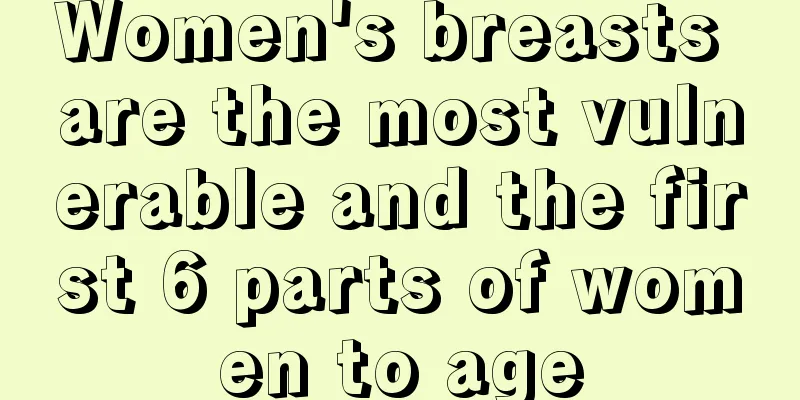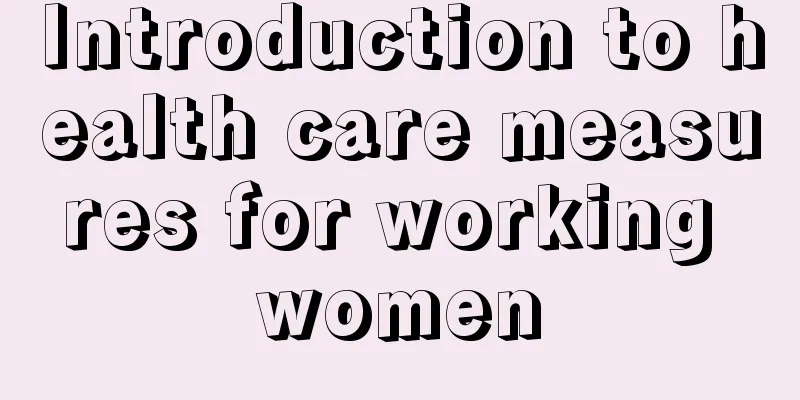Women's breasts are the most vulnerable and the first 6 parts of women to age

|
As the years go by, women begin to age. So, what are the signs of aging in women? 1. Breasts: Being a woman requires having a firm and firm breast While breasts bring women the happiness of "being a woman is good", the breasts themselves are in various dangers. Currently, breast cancer has replaced cervical cancer as the number one malignant tumor that threatens the health and life of women in my country. The breast is one of the most vulnerable parts of women and is closely related to female aging. Induced abortion can increase the risk of breast cancer; even bras with too much lace and nylon can cause lactation disorders. Tips: Self-examination of massage is essential. Experts remind that after the age of 30, every woman should learn to examine her breasts by herself. For example, when you are bathing or sleeping, touch your breasts with your fingers. Do not use too much force and do it evenly in a clockwise direction, finishing with the center of the breast. If you find any lumps or abnormalities, go to a breast specialist for a check-up and ask the doctor to make the final judgment. 2. Waist: Reducing burden and weight is very important Adult women, especially middle-aged and elderly women, are prone to suffering from low back and leg pain. It can be said that women struggle with low back pain throughout their lives. After women start menstruating in their teens, the muscles supporting the spine find it difficult to grow again, and the waist becomes easily fatigued. Women who often wear high heels will develop a bent back posture, which can easily cause low back pain. After pregnancy, weight gain and poor posture can cause lower back pain. After childbirth, the pelvic joint ligaments loosen and cause long-term low back pain. After menopause, women suffer from osteoporosis, a brittle spine, and a bent waist, which can also lead to low back pain. Tips: Avoid sitting for long periods of time and strengthen your waist. Women may wish to do some waist exercises. Backward walking, yoga, jogging, etc. can all exercise the waist muscles. At the same time, you can also twist your waist often and do swallow flying exercises in bed before going to bed. For office workers who sit for long periods of time, they can do chest expansion exercises, as well as bending back and pulling upwards, at regular intervals every day. 3. Heart: The incidence rate is no lower than that of men Contrary to people's impression, the incidence of heart disease in women is not lower than that in men, but women first suffer from heart disease 10 years later than men. But once they get it, it is often fatal. Once the heart is disturbed, symptoms such as shortness of breath, fatigue and jaw pain are often present, and usually last for several hours. This situation is more common during menopause, because the estrogen level in women decreases and its protective function is relatively weakened. Tip: Large fluctuations in weight can damage your heart. Drastic fluctuations in weight pose a greater threat to women's hearts. Studies have shown that if a woman loses or gains more than 5 kilograms in a year, her heart will be significantly damaged, but gradual weight loss is good for health. 4. Hair: Too much perming and dyeing can increase the risk Studies have shown that if a woman dyes her hair more than 12 times a year, her chance of developing lymphoma will be 26% higher than that of a woman who never dyes her hair. The survey of 1,300 women found that those who used black hair dye for more than 25 years had twice the risk of developing the disease. It is reported that contact dermatitis caused by hair dyeing accounts for about 10% of people who dye their hair. Tips: Perm and dye your hair no more than twice a year. Since purely natural hair dyes are almost non-existent, experts recommend that you do not perm or dye your hair more than twice a year. Be sure to do a skin test before dyeing your hair; do not use hair dye that has been left for more than half a year; if you want to pursue fashion, it is best to choose partial highlights; women with scalp wounds, chronic diseases, or who are about to become pregnant or are already pregnant should not perm or dye their hair. 5. Ligaments: Inherently fragile and easily injured Compared with men, women are more likely to strain the ligaments of joints such as the knee and ankle. This is because women have wider hips, which causes the ligaments to bear excessive force. Therefore, women's ligaments are inherently much more fragile than men's. Secondly, women’s motor reactions are generally slower than men’s. When danger occurs, they cannot be relieved in time, making them more susceptible to injury. Once a ligament is torn, it can take months to heal. Tips: Take precautions before and after menstruation. Chinese medicine experts point out that ligaments are most vulnerable during menstruation and one week after the end of menstruation. If not properly protected, it can easily lead to aging in women. Traditional Chinese medicine experts suggest that during menstruation, women should avoid sports that require quick reaction and high accuracy, such as shuttlecock kicking, as well as sports that require moving left and right, such as dancing and playing ball. They should also try to avoid lifting heavy objects. Doing full-body stretching exercises after getting up every day can wake up the muscles and soften the tendons, ligaments and joints. 6. Feet: Need a second liberation Women who wear high heels have twice the risk of knee arthritis as men! At the same time, since 60% of the body's pressure is placed on the forefoot, over time, it may cause toenails to turn outward. Wearing high heels for a long time can also have adverse effects on the knee joints and spine, causing bone hyperplasia or lumbar disc herniation in these areas. When choosing shoes, pay attention to cushioning. Tips: 1. Try to avoid wearing shoes with special shapes or high heels. The heels should not exceed 5 cm to avoid uneven force on the feet. 2. Wedge heels are best. The wedge heels of about 3 cm are just the right shape to fit the arch of a normal person's foot, making walking more comfortable and stable. 3. When buying shoes, make sure they have a certain cushioning capacity (the thicker the sole, the thinner the sole, the more it hurts your feet), or put a cushion in the shoe to reduce shock. |
<<: How to wear a bra without hurting your body
>>: 9 tests that women must do
Recommend
How long can you live with malignant ovarian cancer?
If patients with malignant ovarian cancer coopera...
Young girl eating soy isoflavones
Women have many common gynecological diseases, an...
VR can help kids overcome painful medical procedures
Children often feel anxious and fearful about hav...
Is there any harm to the body from having an IUD inserted?
With the advancement of our medical technology, m...
Which department should I go to for breast hyperplasia?
Breast hyperplasia is a very familiar physical di...
What causes abdominal pain during second month of pregnancy?
Many women experience abdominal pain during the s...
What should I do if my 10-month-old baby has abdominal distension and indigestion? What should I do if my 10-month-old baby has indigestion and what should he eat?
Adults sometimes have indigestion due to overeati...
What happens if large pieces of endometrium fall off during menstruation?
During menstruation, women often experience some ...
What to do if you have breast pain during breastfeeding
Many women experience breast pain during breastfe...
Pictures of uterine scar diverticulum
The diverticulum here refers to the localized enl...
Can I eat chocolate when I'm pregnant?
You absolutely cannot eat chocolate after you are...
Comic丨Confession of a Pig: When the plan to save mankind falls on my shoulders!
Reviewer: Tang Bo, PhD in Molecular Biology, Chin...
Precautions for pregnancy with rudimentary uterus
There are many congenital uterine diseases, such ...
If you like to eat sour food during pregnancy, is it a boy or a girl?
Every woman wants to know whether she is carrying...









